Should I Buy a Used BMW 3 Series?

Vehicle Overview:
Whether you’re looking for entry-level luxury or the benchmark in sport sedans, BMW’s 3 Series will easily satisfy. The fifth generation models, available between 2006 and 2011 were among the best regarded vehicles in their class.
In 2007 BMW gave the lineup two new turbocharged engines and names. The 328i replaced the 325i making 230-hp while the 335i replaced the 330i with a 300-hp engine. Again, both engines could be paired with all-wheel drive.
That year also saw the introduction of the coupe and convertible versions of the car. All coupes arrived with rear wheel drive, while all-wheel-drive was only available on 328i models. On the other hand, convertibles were only available in rear-drive configurations.
In 2009, the sedans received a styling refresh, while BMW introduced the 335d sedan, a twin-turbo diesel model that made 265 hp and 425 lb-ft of torque. BMW also improved the iDrive infotainment system with better usability and ergonomics.
2010 saw mild trim changes, though in 2011 the coupe and convertible was slightly restyled, while the engine in 335i models was revised for better fuel economy. A 335is was also offered, which uses a 3.0-liter twin-turbo engine to make 320-hp.
Body Styles:
The 2006-2011 3 Series came in four body styles. The E90 is known as the sedan, and is available in rear-wheel and all-wheel drive setups with either a manual transmission or six-speed automatic transmission.
The E91 is the wagon variant and was only available as a 325xi with AWD before 2007. Afterwards, only the 328i was offered, but came in both rear-wheel drive and xDrive AWD.
The E92 is the coupe while E93’s are the convertible. These models feature different styling than the 3 Series sedan and wagon counterparts and come with a few more standard features like HID Xenon headlights.
Top 3 Reasons to Buy
The 3 Series is known for being an excellent handling machine, with solid performance. Balanced weight distribution and rear-wheel helps contribute to the engaging driving feel, while the six-cylinder engines are responsive and powerful. 335i models are capable of hitting 60 mph in about five seconds, while even 328i models are fun, hitting the 60 mph mark in about six and a half seconds.
2. All weather capability:
Since nearly every variant of the 3 Series can be had with all-wheel drive, BMW’s entry-level luxury car is capable in many different weather and road conditions.
3. Luxury:
The 3 Series is still a luxury car and can feature leather seats, wood-trim, navigation and other nice extras. It also has that classic executive look, without having to be a bore to drive.
Top 3 Problem Areas:
1. Engine issues
Turbocharged 3 Series tend to be problematic, with high-pressure fuel pumps being the most documented problem component. This issue can be identified by a variety of engine issues including stalling, rough idle, rough running and long crank times. Additionally, BMW’s variable valve timing system, VANOS, is also a concern with turbocharged models. The sensors involved with VANOS can get dirty and clogged, causing the car to go into a ‘limp-mode.’
2. Electrical Issues:
One of the most common electrical issues with 3 series is with the battery. The positive battery cable connector and the corresponding terminal on the fuse box may degrade or corrode over time. This can result in a loss of electrical power to the vehicle, potentially leading to a stall or inoperable vehicle. Additionally, are some instances where the key won’t turn in the ignition and the dashboard illuminates the steering lock symbol. This is likely due to a defective steering column or computer problems.
3. Rattles:
Many owners report minor annoying problems like rattling and vibration noises coming from the interior of the car.
Before You Buy:
It’s clear that if you’re buying a BMW 3 Series you should have a large budget dedicated towards repairs and maintenance. Be sure to have any prospective car properly inspected in order to avoid unexpected and expensive problems. Many models are involved in technical service bulletins. Be sure to have your car checked to ensure that these TSBs were performed before you buy a 3 series.
Additionally, BMWs use expensive and uncomfortable run-flat tires. These tires tend to be harder and can wear quickly. Look to see how much a new set of run-flat tires would cost, and consider replacing them with traditional tires.
Best Bang for Your Buck
While the 3 Series is a fantastic performance machine, they also can be a maintenance headache. While the 335i models are powerful and fun to drive, approach with caution as they can be riddled with high-pressure fuel pump and other engine issues. Only consider one if they check out after an extensive pre-purchase inspection.
Diesel models could also be considered, as they’re fuel efficient and feature over 400 lb-ft of torque, but there’s too little information about long-term reliability.
Models with naturally aspirated engines like the 2006 325i and 330i are regarded as the best bet in terms of reliability, while still providing responsive driving dynamics.
Recall and Crash Test Database
2006 BMW 3 Series NHTSA Recall Database
2007 BMW 3 Series NHTSA Recall Database
2008 BMW 3 Series NHTSA Recall Database
2009 BMW 3 Series NHTSA Recall Database
2010 BMW 3 Series NHTSA Recall Database
2011 BMW 3 Series NHTSA Recall Database
2006 BMW 3 Series Coupe NHTSA Crash Test Rating
2006 BMW 3 Series Sedan NHTSA Crash Test Rating
2007 BMW 3 Series Sedan NHTSA Crash Test Rating
2007 BMW 3 Series Wagon NHTSA Crash Test Rating
2008 BMW 3 Series Sedan NHTSA Crash Test Rating
2008 BMW 3 Series Wagon NHTSA Crash Test Rating
2009 BMW 3 Series Sedan NHTSA Crash Test Rating
2009 BMW 3 Series Wagon NHTSA Crash Test Rating
2010 BMW 3 Series Coupe NHTSA Crash Test Rating
2010 BMW 3 Series Sedan NHTSA Crash Test Rating
2006 BMW 3 Series Sedan IIHS Crash Test Ratings
2007 BMW 3 Series Sedan IIHS Crash Test Ratings
2008 BMW 3 Series Sedan IIHS Crash Test Ratings
2009 BMW 3 Series Sedan IIHS Crash Test Ratings
2010 BMW 3 Series Sedan IIHS Crash Test Ratings
2011 BMW 3 Series Sedan IIHS Crash Test Ratings
2007 BMW 3 Series Convertible IIHS Crash Test Ratings
2008 BMW 3 Series Convertible IIHS Crash Test Ratings
2009 BMW 3 Series Convertible IIHS Crash Test Ratings
2010 BMW 3 Series Convertible IIHS Crash Test Ratings
2011 BMW 3 Series Convertible IIHS Crash Test Ratings

Sami has an unquenchable thirst for car knowledge and has been at AutoGuide for the past six years. He has a degree in journalism and media studies from the University of Guelph-Humber in Toronto and has won multiple journalism awards from the Automotive Journalist Association of Canada. Sami is also on the jury for the World Car Awards.
More by Sami Haj-Assaad























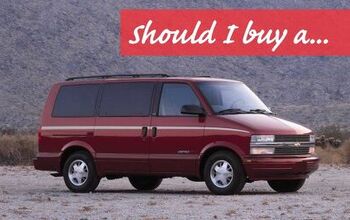
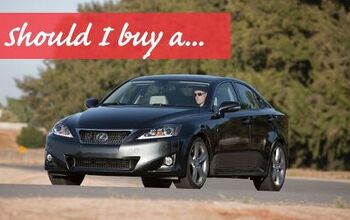
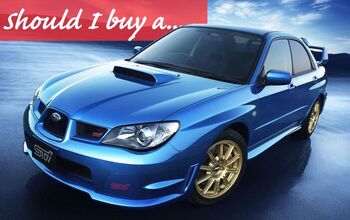

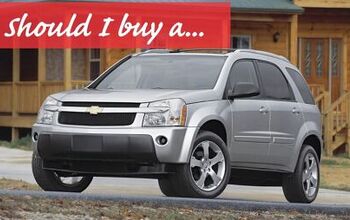



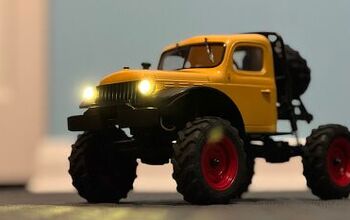






Comments
Join the conversation
I like this generation of 3 series the best and think it is the best styled out of all generations of 3 series by far.